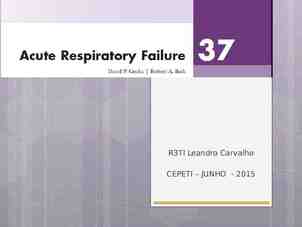Higher History Britain: The Successes of the Liberal Reforms How
41 Slides464.00 KB
Higher History Britain: The Successes of the Liberal Reforms How successful were the Liberal reforms of 190614? An assessment essay
We are learning to Assess the impact of the Liberal Reforms between 1906 and 14 I can Build up notes on the topic Plan a 20 mark essay Pass a 20 mark timed essay
Background (for intro) Between 1906 and 1914 the Liberal government introduced a series of Welfare reforms designed to help the needs of the British people There were many motives for introducing these reforms such as the Social Surveys of Booth and Rowntree which shocked the nation and showed 1/3rd of Brits were living in poverty Fears over national security and efficiency were also important as there were fears that Britain’s young men were not physically able to win a war, and war with Germany was looking more and more likely The Liberal reforms were designed to help those who needed it the most in the country as opposed to establishing a comprehensive welfare state The reforms were a ‘first step’ in providing government assistance to British people
How successful were the Liberal Reforms 1906-1914? Historians debate how well the Liberal government’s reforms were able to meet the needs of the British people Some believe they provided much needed assistance to the poorest in society and helped a great deal However other historians say that some social issues were ignored and the Liberal reforms made little difference to the people of Britain
Who were the Liberal Reforms designed to help? ‘The Factors’ 1. The Young 2. The Old 3. The Workers
The Young Free School Meals: Knowledge In 1906 The Liberals passed the School Meals Act Local Authorities were permitted to tax people in order to provide one free meal per day on schooldays
Free School Meals: Analysis This was a success because it meant that needy pupils were now receiving one nutritious meal per day and it allowed them to learn without the distraction of hunger (success) By 1914, 14 million schoolchildren in Britain’s schools were being fed each week (success)
Free School Meals: Analysis However, the provision of school meals was not compulsory for all local authorities and in 1911, less than 1/3rd of local authorities were providing the meals (Limitation) Also, poorer schoolchildren were still not being fed during school holidays or at weekends so the effects were limited (Limitation)
A and A in an assessment essay Knowledge (K) Name, date and description of a reform (law) Analysis (A) Giving one success OR limitation of the reform Analysis (A ) combining a success with a limitation e.g. “On the one hand free school meals were a success because needy pupils were now receiving one nutritious meal per day and it allowed them to learn without the distraction of hunger however on the other hand it was not compulsory to give the free school meals and only 1/3rd of authorities were issuing the meals in 1911”
1. The Young Medical Inspections: Knowledge In 1907 The Liberals passed the Medical Inspections Act This made medical inspections in school compulsory and a child would have at least three during their school career
Medical Inspections: Analysis This was a success because it helped diagnose killer illnesses in children such as rickets and TB (success) The Act helped parents slightly as Advice was provided to parents of ill children about how they could treat the illness(success)
Medical Inspections: Analysis However, the inspection was free but the treatment was not so most poor parents were not able to actually afford the treatment or medication (Limitation) Free medical treatment was not given until 1912 so the effects of the act were limited until then and even in 1912, local authorities ignored the reform (Limitation)
The Young Children's Charter: Knowledge In 1907 The Children’s Act brought together and formalised law which protected children and was designed to help prevent neglect. Juvenile courts & borstals were established Children under 16 were banned from smoking, drinking alcohol or begging
Children’s Charter: Analysis This was a success because it was the first time vulnerable young people were protected by the law as during Victorian times there was no such protection(success) However, The Act was difficult to enforce and many children continued to beg and smoke publically and nothing was done (limitation)
One group the Liberal’s attempted to help was the young. Reform 1 Success and Limitation Reform 2 Success and limitation Reform 3 Success and limitation Therefore the Liberal reforms were only partly successful. – I’ll show you how to do Ev for this essay when we have looked at the other factors.
One group the Liberals attempted to help was the young. The Liberals introduced the Free School Meals Act in 1906. This provided free meals for children during the school term. This helped the young as it ensured the children had at least one nutritious meal per day and, by 1914, 14 million children were receiving free school meals. However, many local authorities didn’t enforce the act and by 1911 less than 1/3rd of authorities were providing the service which suggests that the Liberals were only partially successful.
The Liberals also introduced Medical Inspections in schools in 1907. This made medical inspections in school compulsory and a child would have at least three during their school career. On the one hand this was a success because it helped diagnose killer illnesses in children such as rickets and TB. On the other hand, the inspection was free but the treatment was not so most poor parents were not able to actually afford the treatment or medication. Therefore the Liberals were only partly successful.
The Liberals also introduced the Children’s Charter in 1907 which brought together and formalised law which protected children and was designed to help prevent neglect. The act made it illegal for children under 16 to smoke, drink alcohol or beg. On the one hand this was a success because it was the first time vulnerable young people were protected by the law as during Victorian times there was no such protection. On the other hand, the Act was difficult to enforce and many children continued to beg and smoke publically and nothing was done. Therefore the Liberal reforms were only of limited success.
2.The Old Old Age Pensions: Knowledge In 1908 the Old Age Pensions Act provided a small pension for those aged 70 People over 70 were given between 5 and 25p per week dependent on wealth Married couples were given 37p
Pensions: Analysis The pension was a great success and was very popular with 970,000 old people benefitting from it by 1914 (success) For many older people it did make life slightly more bearable financially and helped some older people from falling below the poverty line (success)
Pensions: Analysis However, Seebohm Rowntree had identified 35p per week as being the bare minimum needed to survive and the pension fell short of this (limitation) Another limitation was that life expectancy in some industrial slums was in the mid-40s so few people lived long enough to claim the pension at 70 (limitation) In addition, many old people were excluded from claiming the pension such as those who had not worked regularly or those who had spent time in prison (limitation)
Another group helped by the Liberals was the old. In 1908 the Old Age Pensions Act provided a small pension of between 5 and 25p per week for those aged over 70. The pension was very popular with 970,000 old people benefitting from it by 1914. However, life expectancy in some industrial slums was in the mid-40s so few people lived long enough to claim the pension at 70. Although for many older people it did make life slightly more bearable financially and helped some older people from falling below the poverty line. It can be argued, however, that the pension was too little as Seebohm Rowntree had identified 35p per week as being the bare minimum needed to survive and the pension fell short of this. Therefore the Liberal reforms only met the needs of the elderly to an extent.
Another group helped by the Liberals was the old. In 1908 the Old Age Pensions Act provided a small pension of between 5 and 25p per week for those aged over 70. On the one hand, the pension was very popular with 970,000 old people benefitting from it by 1914. For many older people it did make life slightly more bearable financially and helped some older people from falling below the poverty line. On the other hand, life expectancy in some industrial slums was in the mid-40s so few people lived long enough to claim the pension at 70. Also, the pension was too little as Seebohm Rowntree had identified 35p per week as being the bare minimum needed to survive and the pension fell short of this. Therefore the Liberal reforms only met the needs of the elderly to an extent.
3.The Workers National Insurance Part 1: Knowledge In 1911 The National Insurance Act Part 1 created a system of health insurance for workers (i.e. sick pay) The worker paid 4p per week, the employer 3p and the government 2p ‘ninepence for fourpence’ The worker received 50p per week when off work sick, for 13 weeks then a lower rate was paid for the next 13 weeks
The Workers National Insurance Part 2: Knowledge In 1911 The National Insurance Act Part 2 was an unemployment insurance scheme Insured workers received 35p per week whilst unemployed for 15 weeks per year The benefits were paid at newly opened Labour exchanges which provided unemployed workers with information on local job vacancies
National Insurance: Analysis The NI Act helped people because absence from work through sickness was a major cause of poverty therefore any money coming in during sickness would help a family in need (success) Labour exchanges were helpful to unemployed people because prior to these, many men did not know where to go to find work when out of a job (success)
National Insurance: Analysis The act was limited in its success because only the insured worker received benefits like medical treatment, they did not extend to the worker’s family (limitation) They were further limited because the benefits were limited to a period of only 26 weeks; many workers were ill for longer than this(limitation) Many historians have also argued that paying the contributions of 4p per week may have actually led to further poverty in some families as it was effectively a wage cut (limitation)
Main Liberal Reforms (you need to know all of these for your 6/6 for K) 1906 Free School Meals – 14 million per week being issued by 1914. 1907 Medical Inspections Act – medical inspections given at school 1907 Children’s Charter – set out laws to protect Children i.e. restrictions on alcohol 1908 Old Age Pensions – 25p per week for those 70 (1/4 average wage). 1911 National Insurance I – sickness benefit for poorer workers – e.g. paid for doctor and medicine. 1911 National Insurance II – gave unemployment insurance to half a million poorly paid workers or those in seasonal employment.
Extension: Use p62 & 63 of blue book to find successes & limitations Other notable Liberal reforms 1906 Workman’s Compensation Act – extended compensation to cover an additional 6million workers injured at work 1908 Miner’s 8 hour day – limited hours spent underground for miners 1909 Labour exchanges – similar to jobcentres where unemployed could register to find work 1911 Shops Act – limited working hours for shop assistants and guaranteed a half day off
Some views which might help with your analysis/ evaluation The liberal reforms eased the problem of poverty for the young, sick, unemployed & old Based on the scale of poverty the government faced they did as well as they could have The threat of war from Germany meant that the government had the expense of preparing for war to deal with too The liberal reforms helped change the attitudes of people towards helping the less fortunate The reforms were the first big change away from ‘laissez-faire’ towards an interventionist model
Many workers were unimpressed by the reforms as they reduced their ‘take-home’ wage Other aspects of poverty like poor housing were completely ignored by the reforms The Liberals did not create a ‘welfare state’ They created a ‘halfway house’ between laissez faire and a welfare state Winston Churchill said that the nature of the reforms was that ‘if we see a drowning man we do not drag him to the shore. Instead we provide help to allow him to swim to shore’.
Consolidation A good idea when you have taken all your notes for a topic is to create a condensed revision guide for the essay This might be a mind map, picture map, bullet points etc. but should fit on one page For assessment essays a table can be helpful Do this for homework Useful link http://www.bbc.co.uk/bitesize/higher/history/liberal/impact lib/revision/1/
Evaluation This is a bit different for an assessment essay Rather than saying one factor is more important than another we need to decide who the Liberals helped more than others i.e. who benefitted most and least? The young? The old? The workers? Once you have decided who was helped most and least your evaluation 1 & 2 should fit around that
Evaluation E1 and E2 - 2 marks can be gained from making evaluative comments which relate to individual factors Example – Upon evaluation, the were helped most by the Liberal Reforms because OR Upon evaluation, the were helped least by the Liberal Reforms because NB – You must be saying something new in your evaluation, not repeating your analysis or doing ‘mini conclusions’
Examples Upon evaluation, young people were helped the most by the Liberal Reforms as there were a greater number of reforms put in place for them which improved their health and protected them by law. These changes in the law in the Childrens Charter applied to all children, rich or poor. Upon evaluation, workers were helped the least because the reforms that concerned them most, National Insurance 1 & 2, required them to pay into them and were compulsory meaning that they had to contribute financially to them and lost money but the young and old reforms were not contributory.
Evaluation E - up to 4 marks can be gained from making evaluative comments which show the relative importance between factors (i.e. you compare two) Example – Upon evaluation, the needs of the workers were met more than those of the old because NB – You must be saying something new in your evaluation, not repeating your analysis or doing ‘mini conclusions’ Remember evaluation is really tricky and many candidates get 0/4 but still get an A!
Examples Upon evaluation, the needs of the workers were met more than those of the young because workers were covered by both health and unemployment insurance. This helped give them an income during two difficult times in their life however children would still be subject to poverty if their families experienced unemployment or illness as there was no financial benefit that extended to them specifically. Instead the majority of the benefit they gained from the reforms was reliant on their parents sending them to school, paying for medical treatment and looking after them properly which didn’t always happen.
Essay Questions The Liberal Reforms successes is an example of an assessment essay – this means the SQA expect you to know about changes in the law and assess how successful each was i.e. know the successes & limitations The good thing about these questions is the structure of the essay never changes! Always young-old-workers Example essay questions ‘The Liberal Reforms of 1906-14 failed to meet the needs of the British people’. Discuss. How effectively did the Liberal Reforms of 1906-14 meet the needs of the British people? Discuss the view that the Liberal Reforms fully met the needs of the British people 1906-14.
Let’s take this one as an example ‘The Liberal Reforms of 1906-14 failed to meet the needs of the British people’. Discuss. 20 marks The answer never changes You should always argue they met the needs of the British people to an extent i.e. in some ways but not others
Introduction – 3 step plan Background (2/3 sentences – describe motives for reform/ background to reforms) Between 1906 and 1914 Factors (what are the factors in the essay?) The Liberal Reforms were designed to help (who were they for?) Argument (what will you be arguing in terms of how successful they were?) It can be argued that the Liberal Reforms met the needs of the British people to an extent because
Conclusion – 4 step plan In conclusion, the Liberal Reforms met the needs of the British people to an extent. On the one hand (you should take one side of the argument here and explain i.e. in what ways were the reforms successful?) On the other hand (now you should do the same with the other side of the argument i.e in what ways were they limited. Overall, the Liberal reforms (here you should decide whether YOU believe they were largely successful or unsuccessful and give a reason why, which should finish off by making your view very clear)














































